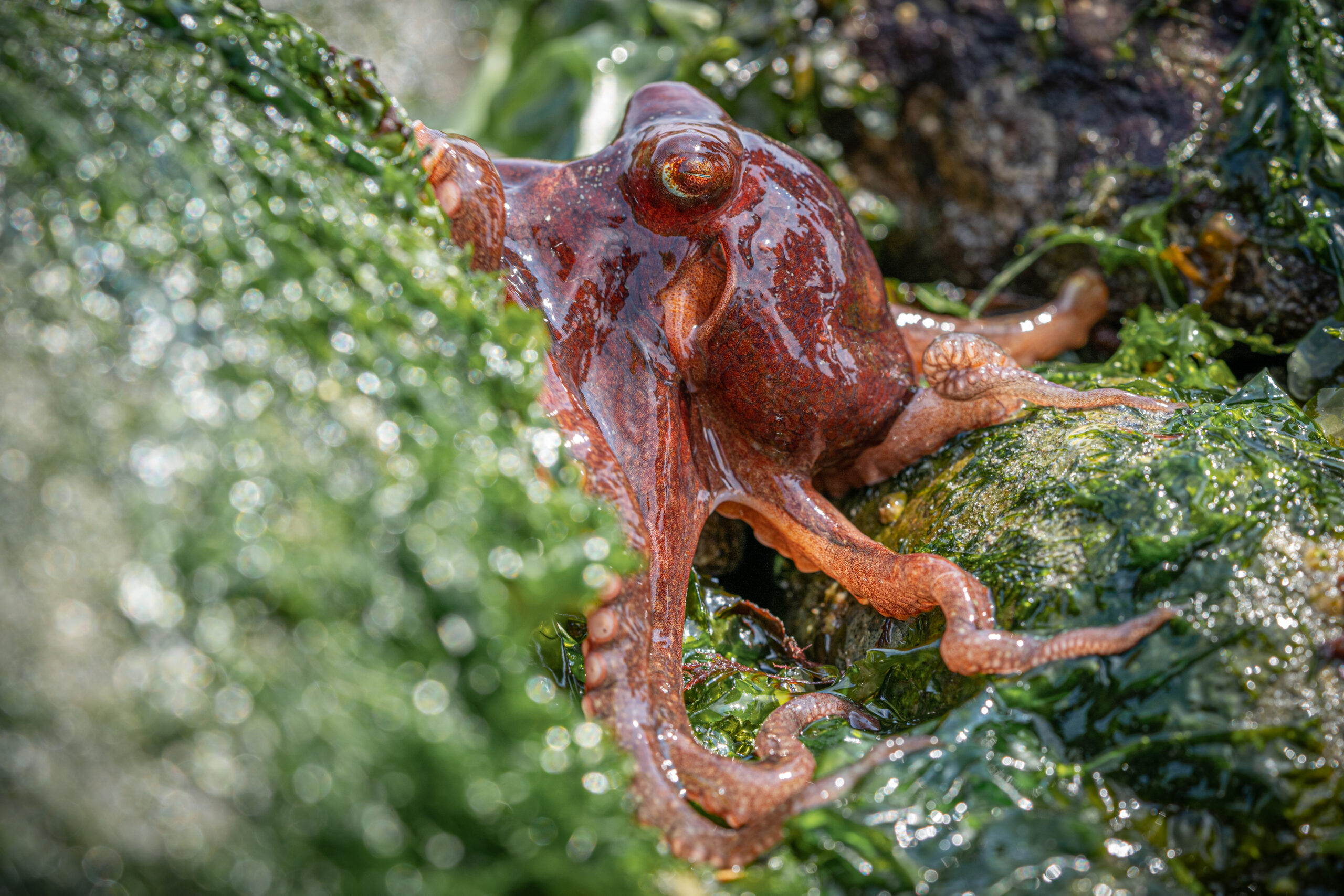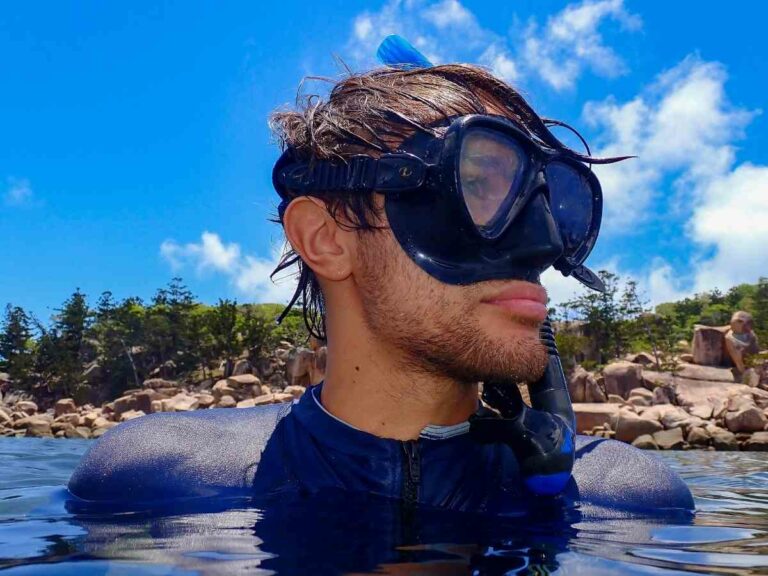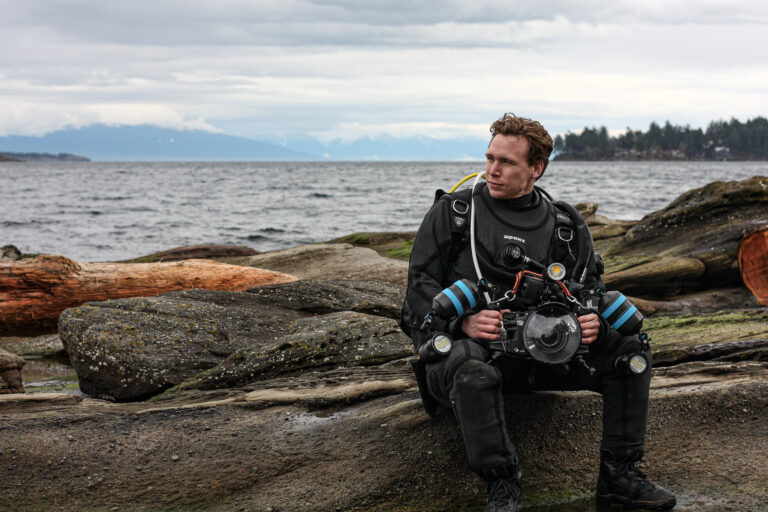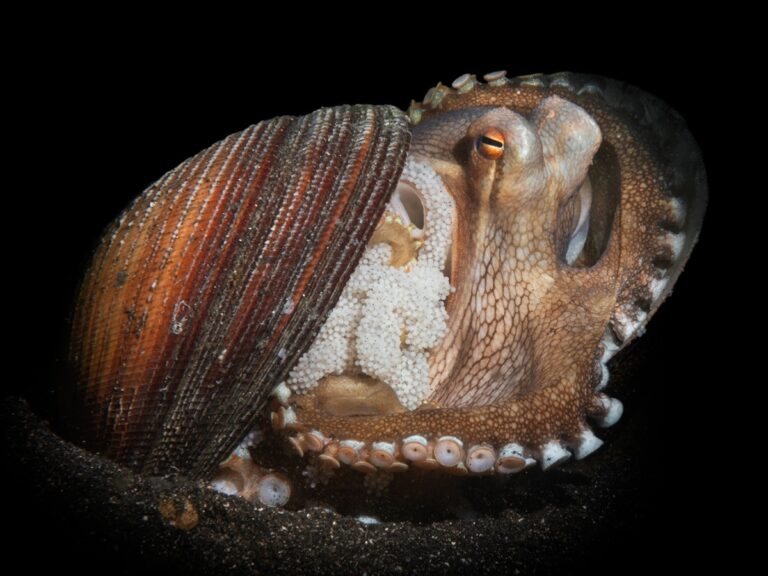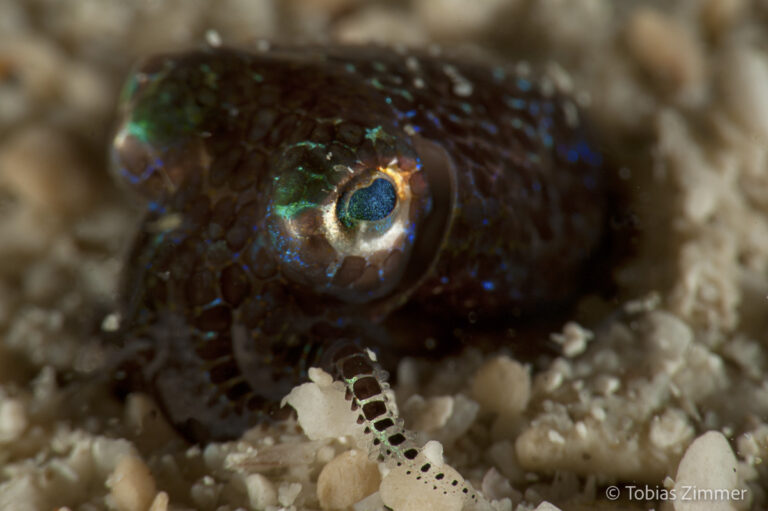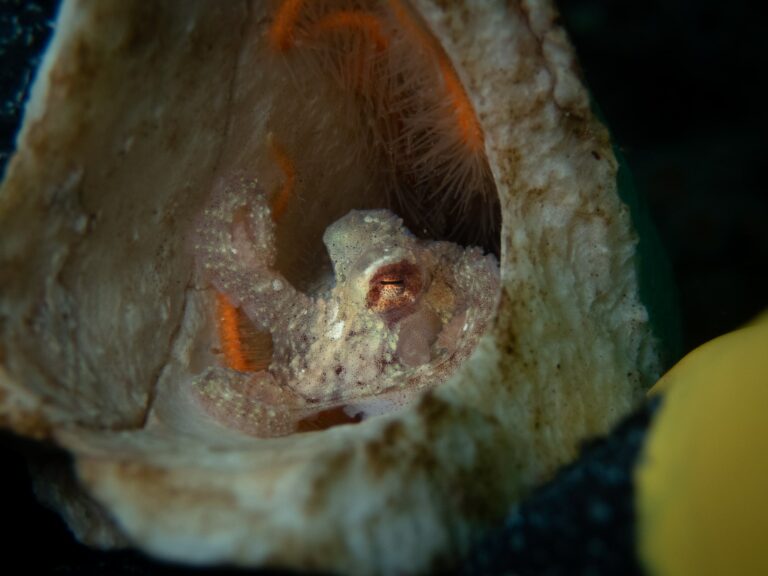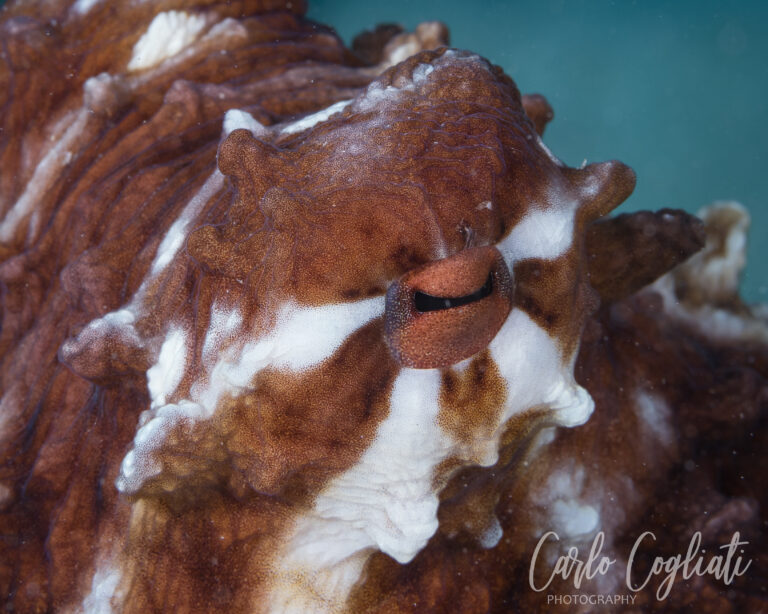‘Cephalotography’ Of The Week: Jen Strongin
Howdy Nation! In today’s post, we are going to be featuring our ‘Photographer Spotlight’ of the week: Jen Strongin. She’s an incredible photographer from the East Coast with a passion for capturing the beauty and emotion of her subjects. From landscapes to wildlife, Jen has developed a style that encapsulates her vision and lets her work speak for itself. Let’s take a look at her process for cephalopod photography!
All photos were provided by Jen Strongin.
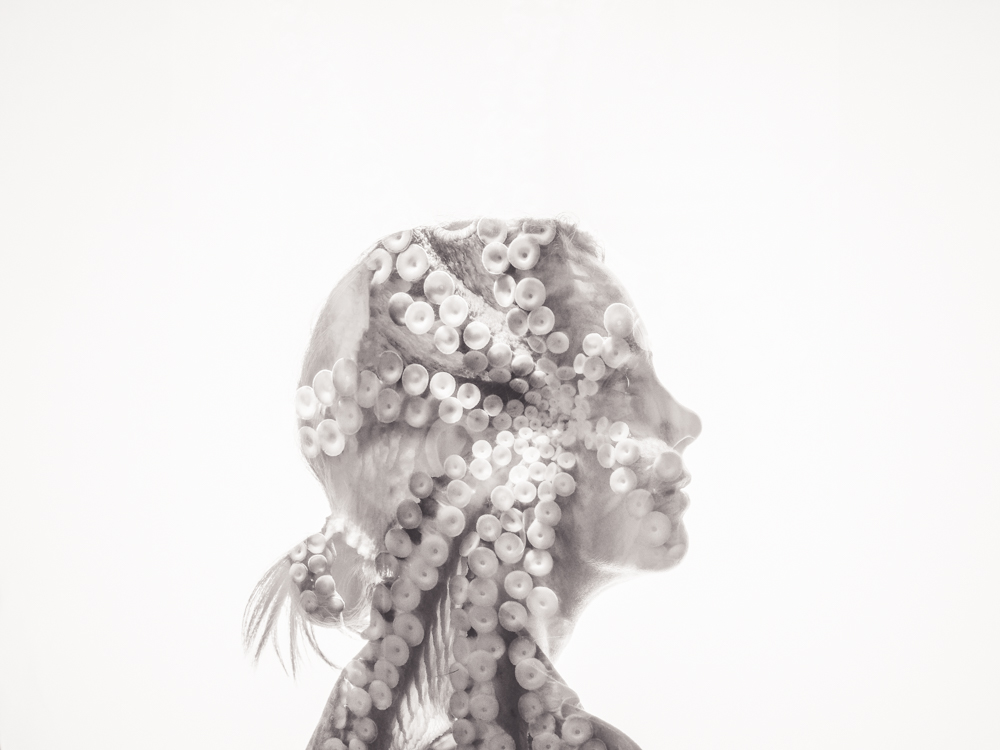
Meet Jen Strongin!
Based in the PNW, Jen is a professional photographer, educator, and naturalist. She finds great inspiration in the natural world, both deep in the wild and on the edges of her urban habitat in Seattle, WA.
Her photography explores the intersections of land and sea, urban and wild, science and art!
She encourages her viewers to walk alongside her in these spaces, to be transported to worlds beyond their own for a brief moment in time, and to revel in the joy and wonder at the beauty of our home planet.
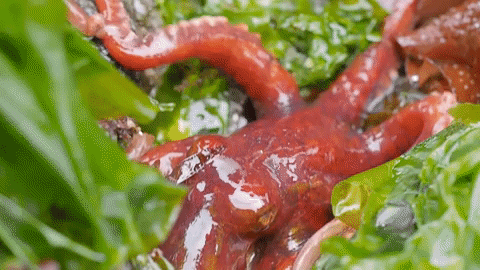
How long have you been an underwater photographer?
“I have been a photographer for 10 years. Most of my work is taken above the surface. Sometimes I do stick my camera under the water, but I am not a diver.”
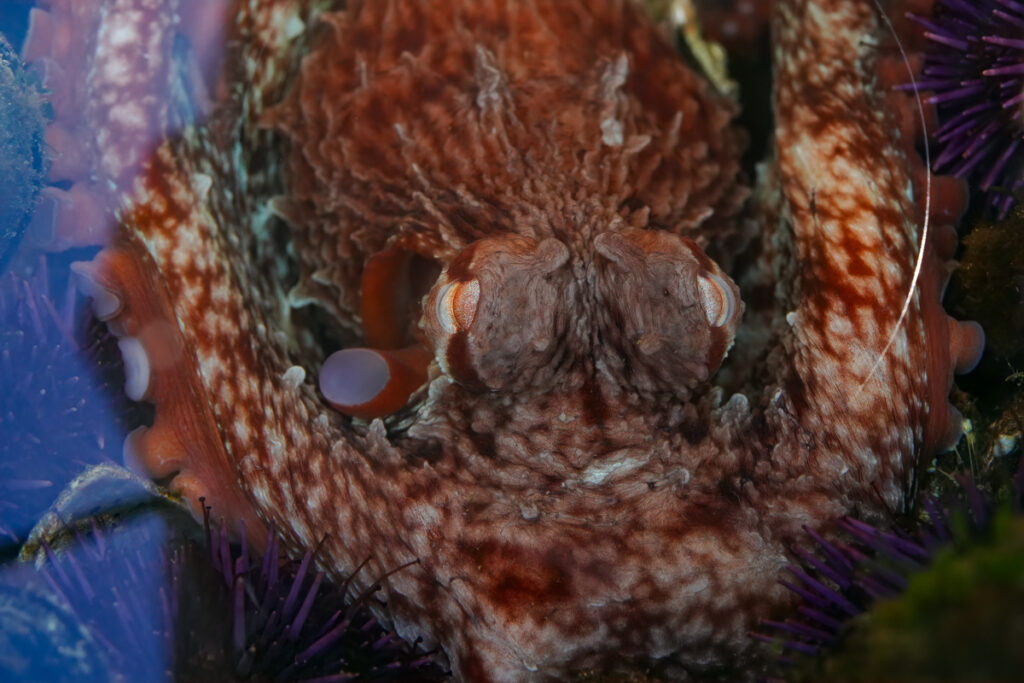
Where do you mainly dive and take underwater photos? How often do you go?
“I am not a diver!
I take most of my marine life photographs above the surface while visiting tide pools and sometimes while submerging my camera underwater while lying on marina docks. I go as often as I can!
Our best low tides here in the PNW happen between May- August and Nov-Feb. They occur every two weeks and as long as the weather permits, you can find me out there!
I try and visit marina docks all year round, especially during the time when we don’t have good low tides to visit.”

How long do you dive for? Do you normally go alone?
“When tie pooling, I am usually out for 2 -4 hours, depending on how low the tide is. I go both by myself and with others.
I help run the Beach Naturalist program for the Seattle Aquarium, so I am often out at low tide during the summer, helping to educate beach visitors in the Seattle area about out amazing marine life here in the PNW.”
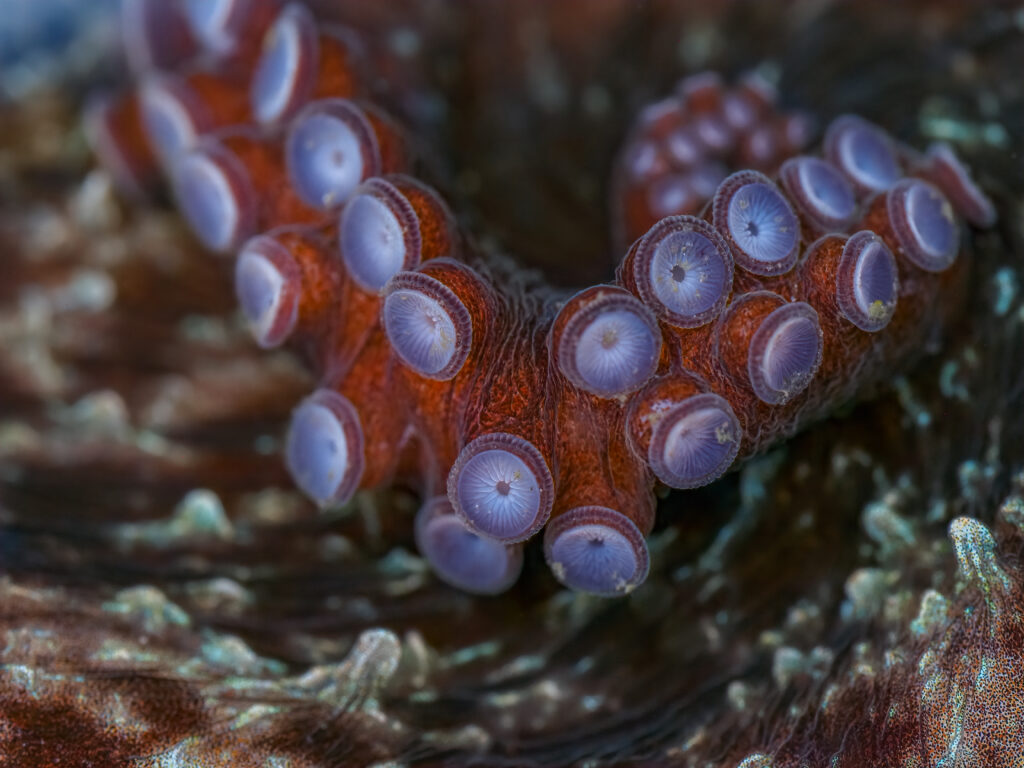
Are you known for having a certain type of style when it comes to your photos? How do you capture the creature that is in front of the camera just the way you want?
“I love capturing both the tiny details and the full picture of low tide animals and their environments.
It is my goal to make people stop and wonder at what they are looking at. If I can get someone to fall in love with an animal so different from themselves (nudibranch, octopus, marine worm), my hope is that they will be inspired to protect our marine environments.
I do a lot of moving around, photographing my subjects from different angles to achieve the photo I want to make.”
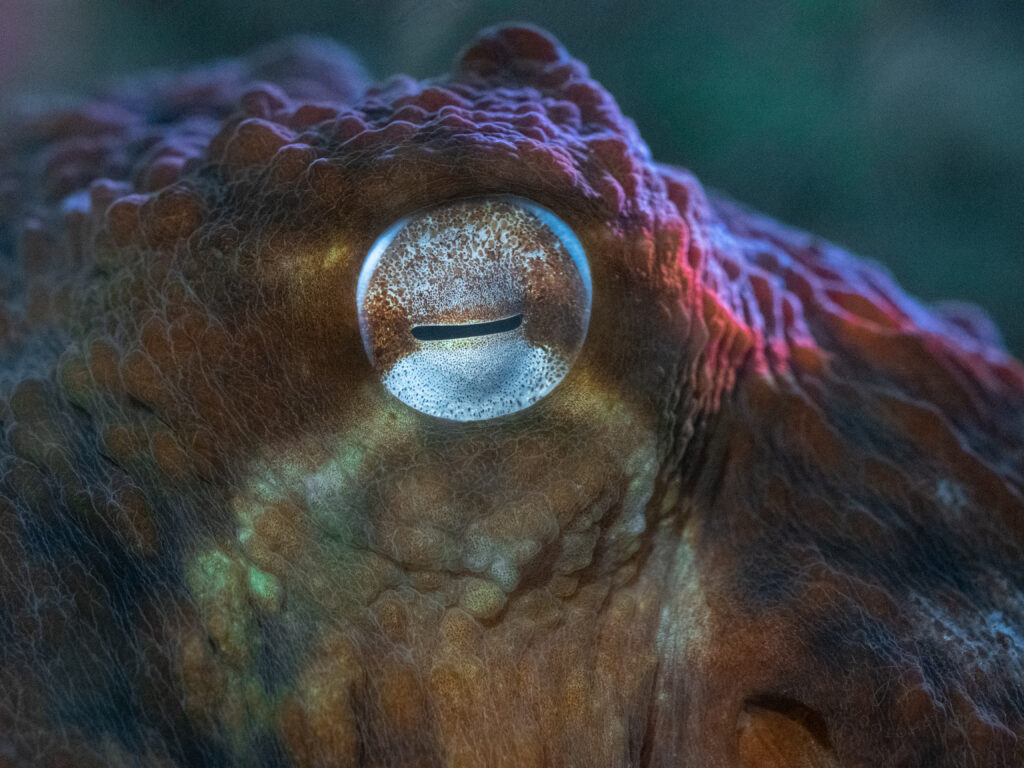
What do you like most about being an underwater photographer?
“Being a photographer is an integral part of who I am, how I move through the world and experience it.
It gets me outside. It gets me to slow down.
It is a constant source of joy and wonder and I need as much as of that as I can get! I think we all do.”
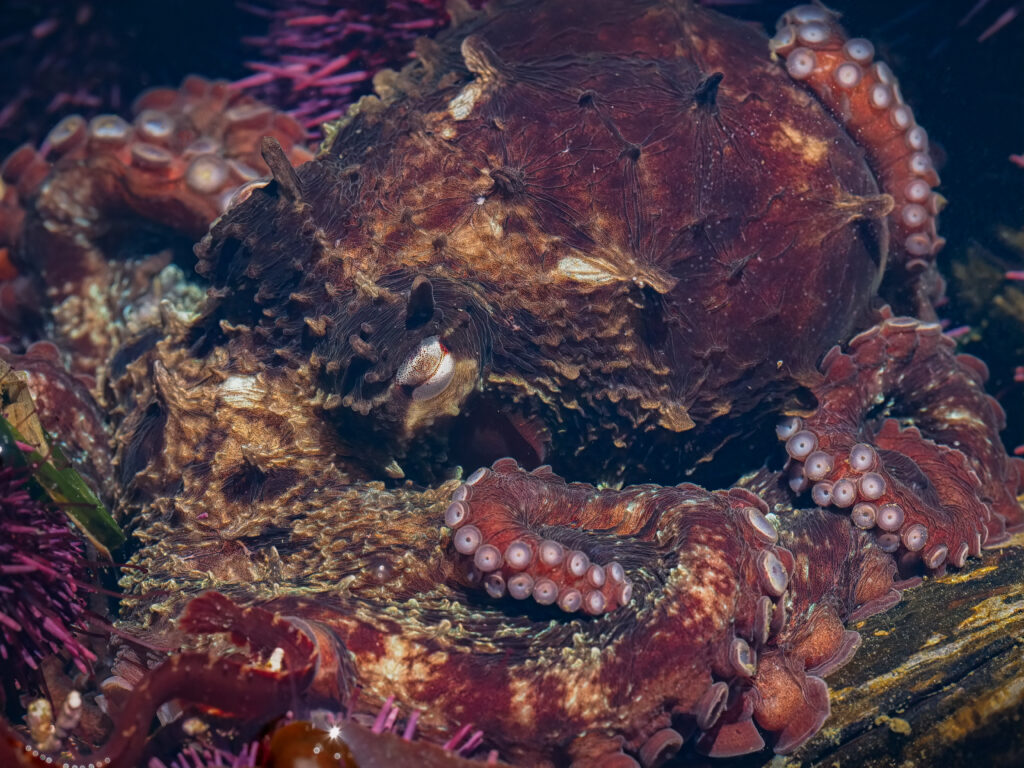
Who (or what) are your biggest influences?
“Quite frankly, there are too many to mention. I have made so many wonderful connections through the community on Instagram over the years- folks whose artistic vision and passion for conservation and education is such an inspiration to me.”
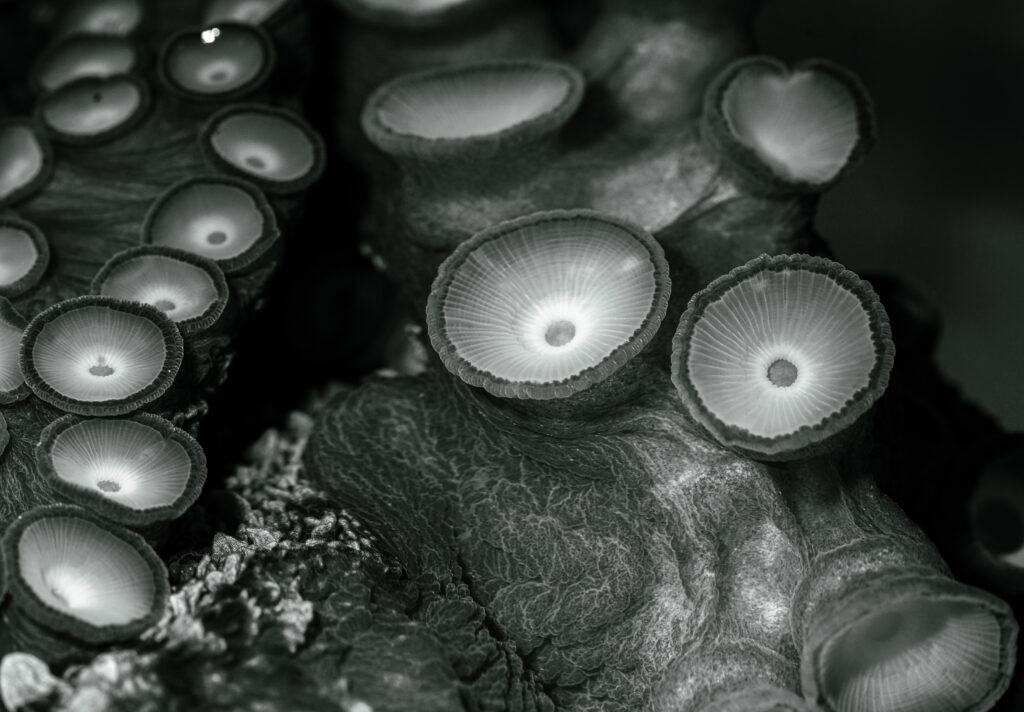
Have you received any awards or recognition?
“One of my favorite commissions over the past couple of years was to have my photographs featured on the windows and entryway of the MAST Aquarium in Redondo, WA.
I love seeing my Giant Pacific Octopus photo on their front doors!”

Do you have a favorite species you like to take pictures of?
“My favorite species are octopuses and nudibranchs. I am a mollusk fan girl all the way!”
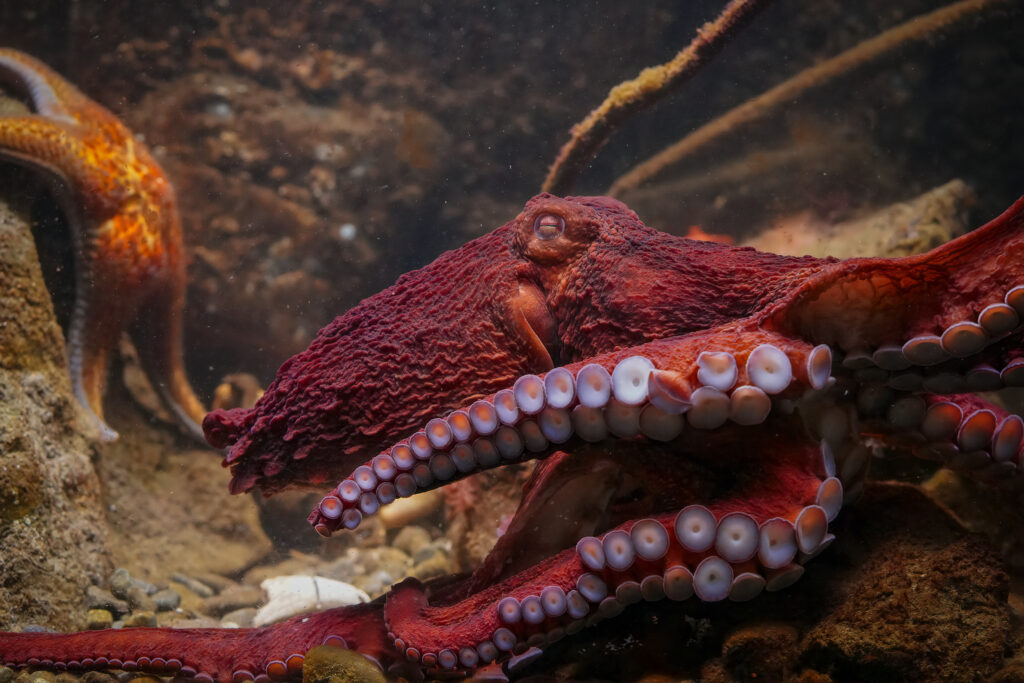
How do you know where to find an octopus or cephalopod to take pictures of?
“Understanding what habitats they live in is key.
Looking for clues like middens (remnants of shells that indicate an octopuses den) is another good way. To find one at low tide is a little more challenging than being a diver.
I have learned they can really pop up anywhere in the intertidal zone. It has to be a pretty low, low tide though to see them. I know from my own experiences being out in the field where I have found them in the past, so I often return to those places.
I love photographing squid, and I know from experience they are really only seen in our intertidal zone here during the fall/winter months. It is worth it for me to visit low tide at midnight on a 30 degree winter night if there is a chance a squid might be seen!”

What draws you in or fascinates you the most about cephalopods? When did this start for you?
“Um… everything?!
I mean- color changing abilities, skin texture changes, full body brains, three hearts….And don’t even get me started about how beautiful the details of an octopuses suckers are!
I have always been fascinated by them, but when I started working for the Seattle Aquarium and I got to spend extended time with these animals, things really ramped up.”
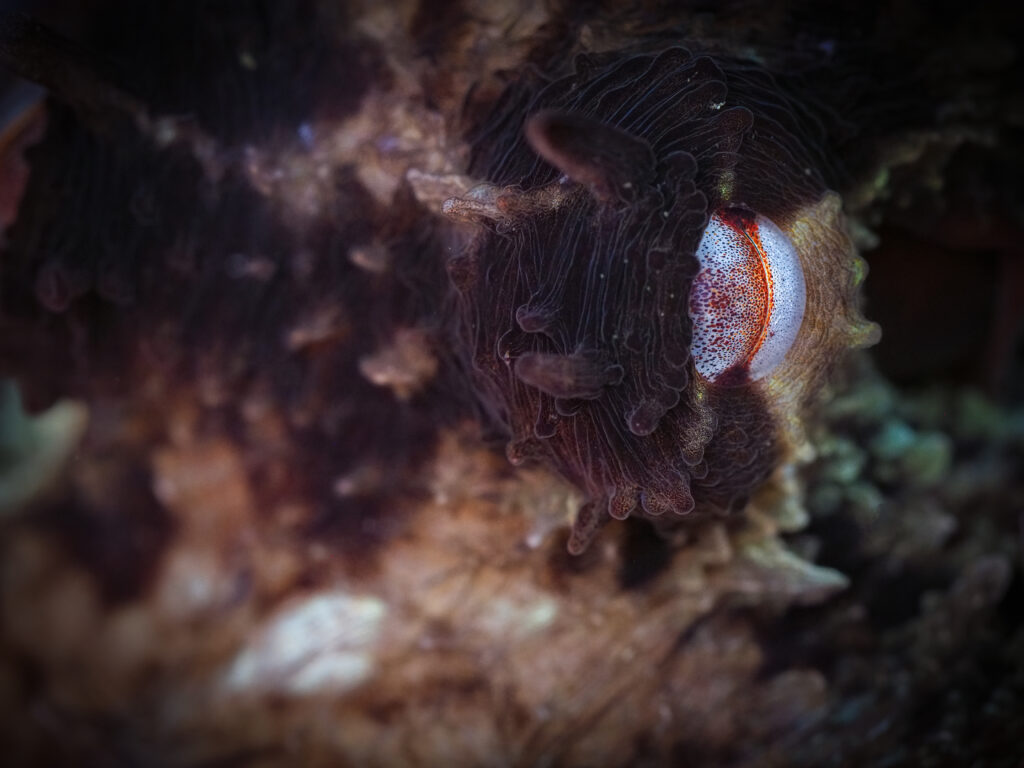
What’s your most memorable underwater photoshoot?
“I have two that really stand out.
- One was the first time I saw an octopus in the wild. I was ankle-deep in water and noticed something on the rocky sea floor that looked like a bright red blob. It stood out, so I went to investigate, and as I approached, it moved- and it was clear it was an octopus. I was by myself and beside myself. I followed it and photographed it until it went too deep for me to continue.
- My second was this past summer. While tide-pooling out on the Washington coast, my friend started gesturing to me to come over to where she was. She had a strange look on her face. When I got there, there was a Giant Pacific Octopus, just hanging out in this gorgeous tide pool filled with anemones and urchins and mussels and seaweeds- it was quite a scene. We got to spend a nice stretch of time with it before it retreated under some urchins. When we got up, I looked over to my right, and there was another one!
Pure magic.”
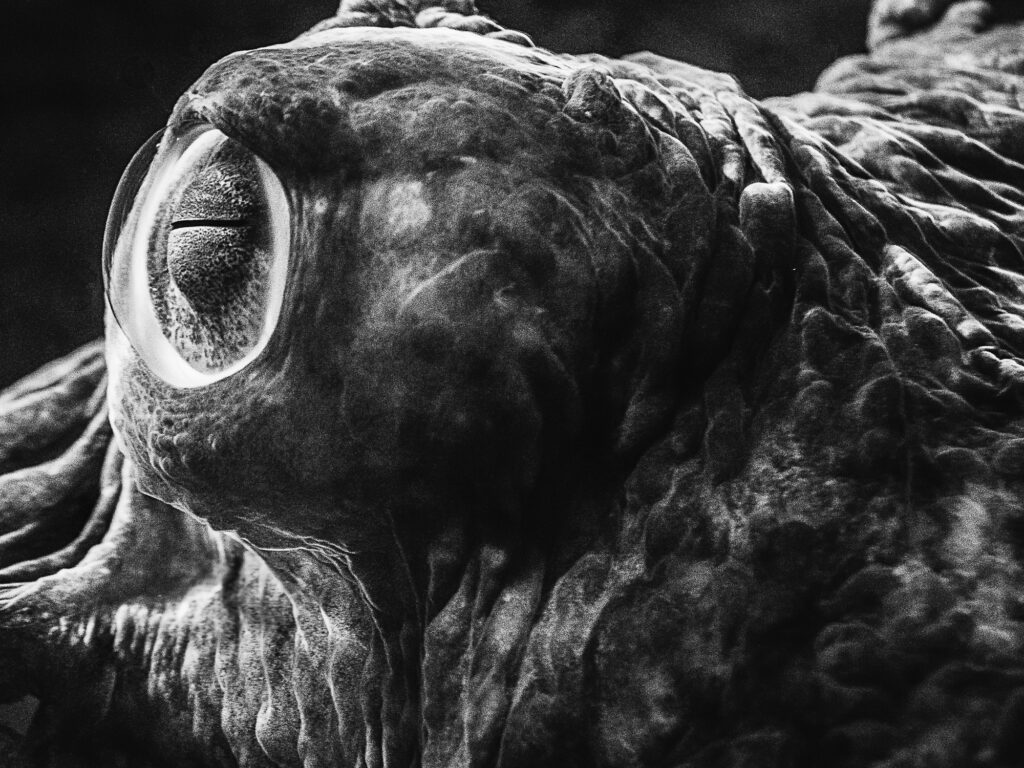
What’s the best place for people to discover your work (website, social media)?
You can find my portfolio on my website!
Thank You For Joining Us For Photographer Spotlight!
First, we want to give a big thank you to Jen Strongin for allowing us to showcase these captivating photos on OctoNation. To continue supporting Jen and her photography, make sure to follow them on Instagram @jensseattle and on Facebook.
If you want to educate yourself some more about all sorts of different cephalopods, take a look at our encyclopedia. Or, what we call it, our Octopedia!
Connect with other octopus lovers via the OctoNation Facebook group, OctopusFanClub.com! Make sure to follow us on Facebook and Instagram to keep up to date with the conservation, education, and ongoing research of cephalopods.
More Posts To Read:
- Do Octopus Bite?
- Does Octlantis Exist?
- “How The Octopus Lost Its Shell” (Octopus Comic)
- What’s The Difference Between Cuttlefish vs. Octopus?
- Breaking News – There are now THREE new species of Nautilus!
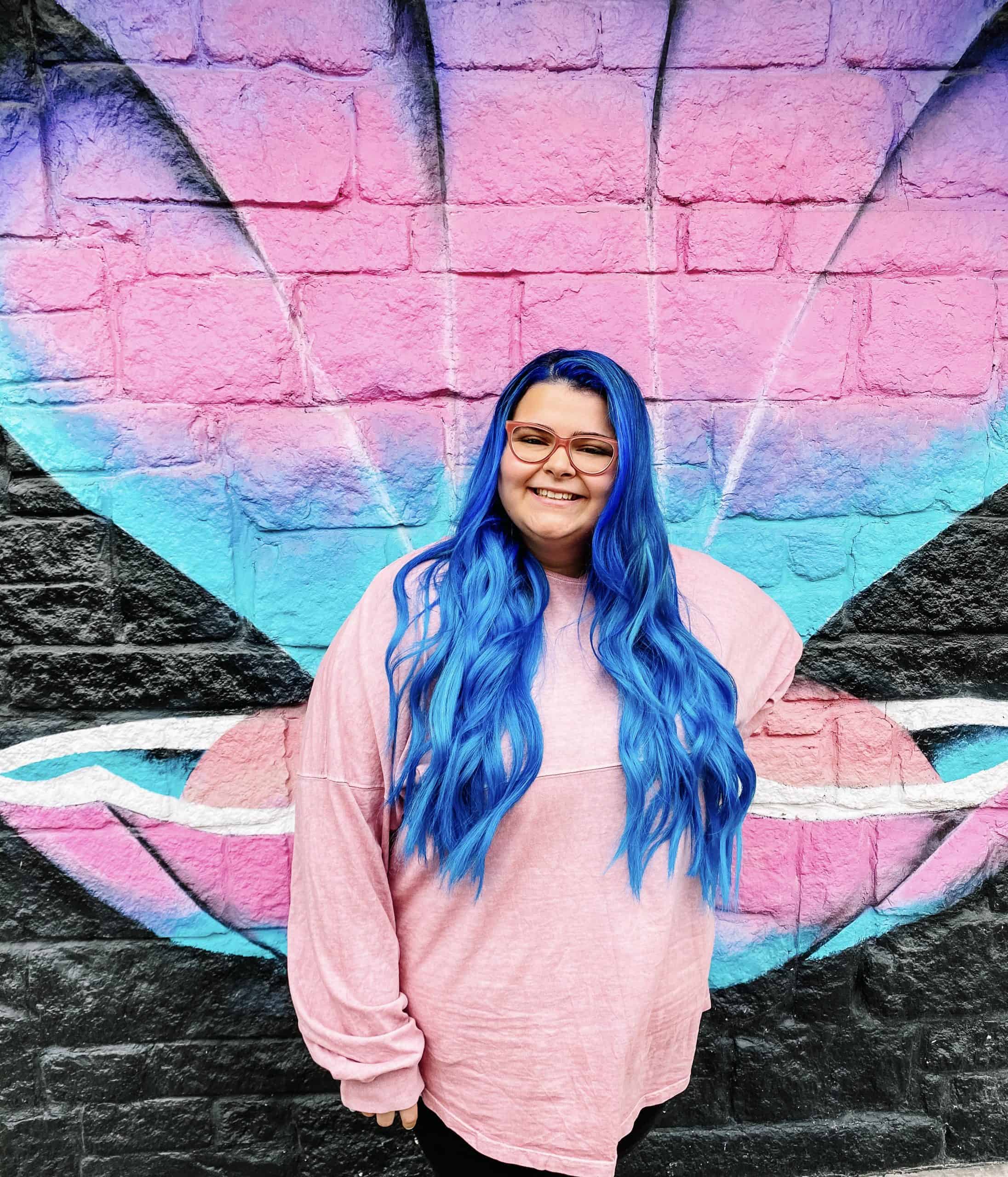
Vee is the blog manager here at OctoNation. Her love and knowledge for all things cephalopods has grown immensely since joining the OctoNation team- and continues to grow daily!
Vee uses her skills of writing, editing, and brainstorming to help create fun, yet educational posts about cephalopods- Something everyone can read and enjoy! As someone who spent the better part of her childhood near the ocean in Miami, Florida, she grew up learning to appreciate all sea life. Her love for the sea inspired her to do something daring- she dyed her hair blue!
